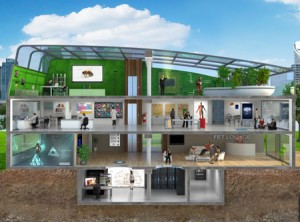C. P. Snow’s 1959 lecture and book, Two Cultures, spends a fair chunk of time on the issue of encouraging the next generation to study science and engineering. As Snow perceived the problem, the UK was falling behind both the US and Russia in the science race. I haven’t investigated what the perceptions were in the US and Russia at the time but I have noticed that descriptions of the race to get someone on the moon feature a great deal of anxiety in the US about Russian supremacy in science. Given human nature, I imagine the Russians were worried too. Plus ça change, n’est ce pas?
Today, everyone is worried that someone else is going to get there (wherever that might be) first and there is enormous pressure internationally to inspire the next generation to pursue science, technology, engineering, and mathematics (STEM) careers.
I see that the Argonne National Laboratory in the US has opened up its doors to high schoolers for a special programme. From the June 6, 2012 news item by Tona Kunz on Nanowerk,
In commencement speeches across the country, graduates have , been warned to expect rocky times breaking into the workforce. Unemployment hovers between 8 and 9 percent. Competition is tough.
Unless you studied science or engineering. Those jobs have a 2 percent unemployment rate, which has led some Fortune 500 companies to complain about offices they can’t fill.
So it’s no surprise that when the U.S. Department of Energy’s (DOE) Argonne National Laboratory decided to give high school students a chance to test-drive a science career, it found students, parents and school officials from Naperville, Ill. eager to hop on board.
Kunz’s June 6, 2012 news release on the Argonne National Laboratory website mentions (Note: I have removed links from the excerpt),
… Teachers received training in the workings of the Advanced Photon Source (APS), the brightest high-energy X-ray machine in the Western Hemisphere, and the Electron Miscroscopy Center (EMC). Students from Naperville’s two high schools then competed for slots on four research teams that used X-ray beams to decipher what matter is made of, how it’s built and how it reacts.
…
More than 5,000 researchers from throughout the world use the APS and EMC annually to target society’s greatest challenges: how to make better pharmaceuticals, sustainable fuels and high-performance materials. These challenges will feed scientific jobs for decades to come.
“I think there is a huge push in our district from the community for STEM (science, technology, engineering and math) education,” said Tricia Noblett, a teacher and science club advisor at Neuqua Valley High School. “I think they are seizing on what has been out there in the media that STEM fields are where the jobs are and that science careers can be interesting.”
Students drew on experiences in their lives to choose research topics and explained their results to scientists at the annual meeting held in May at Argonne for users of the APS, EMC and Center for Nanoscale Materials (CNM).
…
Inspired by the recent cleanup of a contaminated portion of the west branch of the DuPage River near their school, one group of students studied how to increase the efficiency of water filtration systems.
Another group worked with the Naperville wastewater facility to evaluate how corrosion affects the lifespan of water pipes.
And another group looked at how to improve the efficiency of graphene, a nanomaterial that may hold the key to building faster semiconductors for smart phones and the next-generation of research tools.
It’s exciting stuff and I’m always glad to have a chance to pass on information about these kinds of programmes. As for the history, I find it interesting to note the similarities with and the differences from the past.

